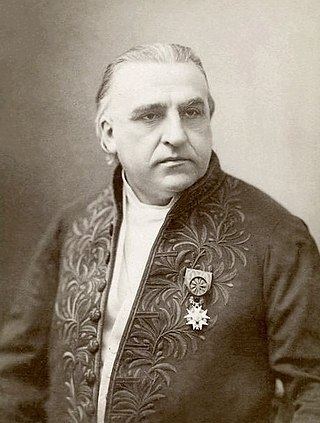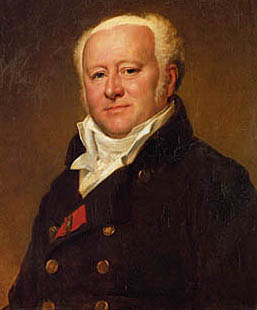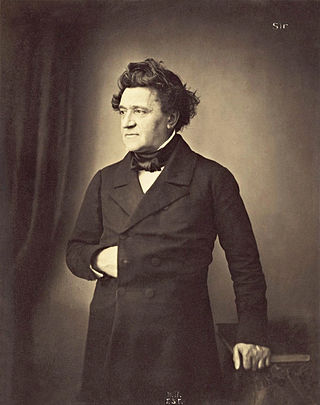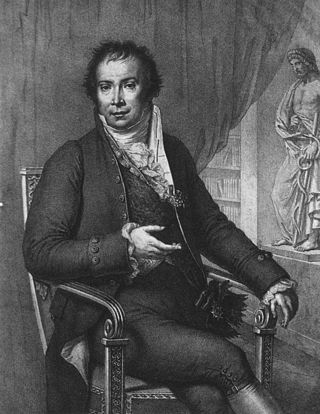The Cemetery of Montmartre is a cemetery in the 18th arrondissement of Paris, France, that dates to the early 19th century. Officially known as the Cimetière du Nord, it is the third largest necropolis in Paris, after the Père Lachaise Cemetery and the Montparnasse Cemetery.

Jean-Martin Charcot was a French neurologist and professor of anatomical pathology. He worked on groundbreaking work about hypnosis and hysteria, in particular with his hysteria patient Louise Augustine Gleizes. Charcot is known as "the founder of modern neurology", and his name has been associated with at least 15 medical eponyms, including various conditions sometimes referred to as Charcot diseases.

Abadie's sign of exophthalmic goiter is a medical sign characterized by spasm of the levator palpebrae superioris muscle with retraction of the upper lid seen in Graves-Basedow disease which, together with exophthalmos causes the bulging eyes appearance.

Jean-Nicolas Corvisart-Desmarets was a French physician.

Paul Abadie was a French architect and building restorer. He is considered a central representative of French historicism. He was the son of architect Paul Abadie Sr.

Pierre Marie was a French neurologist and political journalist close to the SFIO.

Jean-Louis Marie Alibert was a French dermatologist born in Villefranche-de-Rouergue, Aveyron. He was a pioneer of dermatology.

Édouard Brissaud was a French physician and pathologist. He was taught by Jean Martin Charcot at Pitié-Salpêtrière Hospital. He had interests in a number of medical disciplines including motion disturbances, anatomy, neurology and psychiatry. He died of a brain tumour, aged 57.

Jean Casimir Félix Guyon was a French surgeon and urologist born in Saint-Denis, Ile-Bourbon (Réunion).

Jacques Forestier was a French internist who was a pioneer in the field of rheumatology.
Raoul Bensaude was a French-Portuguese physician born in the Azores of Portuguese-Jewish descent.

Jean-François Jarjavay was a French anatomist and surgeon who was a native of Savignac-les-Églises in the department of Dordogne. He practised medicine at the Hôpital Lourcine and Hôpital Beaujon in Paris, and in 1859 became a professor of anatomy.

Photinos Panas was an ophthalmologist born on the Greek island of Cefalonia, then part of the United States of the Ionian Islands.
Events from the year 1842 in France.

Jean Marie Marcel Albert Pitres was a French neurological physician. He was born in Bordeaux and received his training in Paris, where he was the student of Jean Martin Charcot (1825–1893) and Louis-Antoine Ranvier (1835–1922). He served as dean of the Faculty of Medicine at the University of Bordeaux – appointed 1885.
Abadie is a French and English surname derived from the Occitan word abadia ("abbey"). Notable people with the surname include:

Charles Saint-Yves, or Charles de Saint-Yves, was a French ophthalmologist, famous for his treatment of the cataract and his treatise on ophthalmology.

Jean Antoine Ernest Troisier was a French doctor and biologist who headed a laboratory of the Pasteur Institute for several years. He was recognized as an authority on tuberculosis and cancer.
Pierre Amable Jean-Baptiste Trannoy was a French physician, hygienist and botanist.














